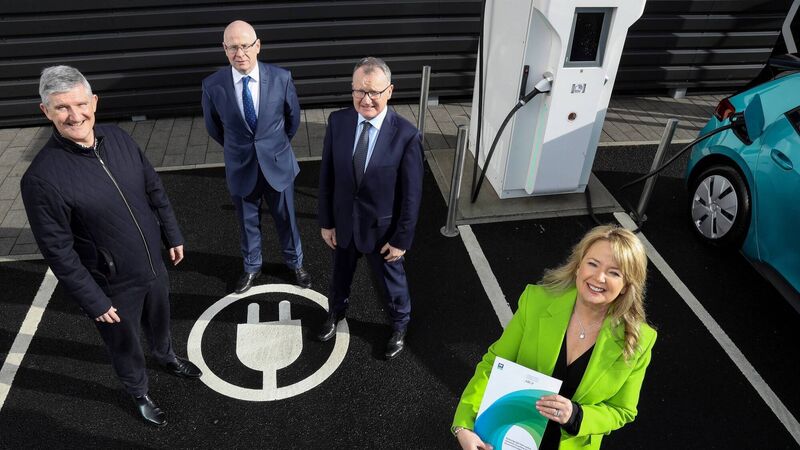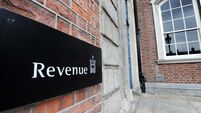100,000 EV charging points needed by 2030 yet only 1,900 are in place

Terry Lee-Williams, ARUP; Brian Cooke, director general SIMI; Gillian Fanning, SIMI president, and Jim Power, economist, at the launch of a new report on reducing light fleet carbon emissions to achieve government targets. Picture: Lorraine O'Sullivan
Ireland will need 100,000 fast charging points within the next eight years in order to facilitate electric vehicles on the road, but just 1,900 are currently available across the country.
That’s according to a new report released by Arup and economist, Jim Power, on reducing light fleet carbon emissions to achieve government targets.
The report, which was commissioned for the Society of the Irish Motor Industry (SIMI), warned that a key environmental policy to have almost a million electric vehicles (EVs) on the road by 2030 will be a huge challenge unless the Government incentivises and supports dealing with the oldest polluting cars, while also increasing the charging infrastructure nationwide which has fallen behind.
It stated that removing the most polluting cars and replacing them with EVs is equivalent to planting more than 1.1bn trees.
In supporting the proposed one million EVs on the road by 2030, 100,000 public chargers will be needed in Ireland.
Currently, there are 1,900 chargers at 800 sites across the island of Ireland and with 47,000 EVs now on Irish roads; the number of charging points falls short of the 4,700 required to serve these.
To achieve this investment in public charging infrastructure, the report said a broader approach is required to include policies on charging at home, as well as diversifying the distribution of fast charge points to ensure charging installations support a complete and robust network.
Along with exponentially increasing the charging infrastructure nationwide, the Government must incentivise and support dealing with the oldest polluting cars, the SIMI report said.
According to the report, in order to deal with the older legacy fleet, assistance will be required for those with the least economic capacity to make the biggest change.
This requires more investment, not just at the top end of the market, to remain fair and equitable if the country is to provide all commuters with viable transport options, it said.
The age profile of the national fleet has led to the continued use of older polluting vehicles with 31.1% of vehicles being pre-2011 or older.
Analysis within the report shows that removal of all these cars and replacing them with EVs would reduce carbon emissions by 875,000 tonnes; this is the equivalent of planting more than 1.1bn trees which would just about cover the entirety of Co Clare.
However, the majority of motorists are used vehicle buyers which means there are three times as many used vehicles being sold as new vehicles, and therefore an insignificant secondhand electric vehicle market.
The creation of this secondary market can only happen via a vibrant overall new car market, the report suggests.
Economist and co-author Jim Power said that selling 945,000 electric and low emitting vehicles by 2030, in line with government policy, is “an extremely ambitious target”.
The industry faces numerous challenges global supply chain issues, used car supply scarcity, Brexit disruptions, rising motoring costs, he said.
"Government support is essential in creating this business environment, through EV grant subsidies, incentives and supporting infrastructure investment which will encourage consumers to take action and expedite sales.”










